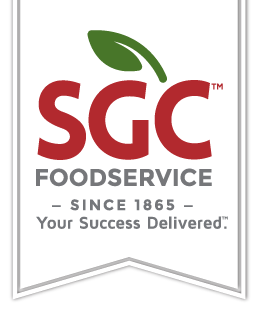In the dynamic world of foodservice, where efficiency and customer satisfaction are paramount, managing food waste is a critical aspect of running a successful and sustainable business. The impact of food waste extends beyond the financial realm; it affects the environment, brand reputation, and community relationships. In this blog, we will explore practical strategies to help restaurants minimize food waste and contribute to a more sustainable and responsible industry.
Conduct a Comprehensive Waste Audit:
Before implementing any changes, it's crucial to understand the current state of your food waste. Conducting a waste audit involves tracking and analyzing the types and amounts of food being discarded. Identify patterns, such as peak times of waste generation, and categorize waste to pinpoint areas for improvement. This data will serve as a baseline to measure the success of your waste reduction efforts.
Optimize Inventory Management:
Efficient inventory management is key to reducing food waste. Implement a first-in, first-out (FIFO) system to ensure that older perishables are used before newer ones. Regularly check expiration dates and rotate stock accordingly. Consider investing in inventory management software to streamline the process, providing real-time data on stock levels, and reducing the chances of over-ordering.
Train Staff on Waste Reduction:
Educating your staff on the importance of waste reduction and providing them with practical strategies can significantly impact your efforts. Train kitchen staff on proper portion control, encourage them to report overstock or spoilage promptly, and instill a culture of mindfulness when handling ingredients. By involving your team, you create a collective commitment to waste reduction.
Implement Portion Control Measures:
Controlling portion sizes not only aids in reducing food waste but also contributes to cost savings. Analyze customer preferences and adjust serving sizes accordingly. Consider offering flexible portion options, such as half-sized portions, to minimize plate waste. Educate your front-of-house staff on communicating portion sizes effectively to customers to manage expectations.
Creative Menu Planning:
Crafting a menu that maximizes ingredient usage can significantly reduce food waste. Create dishes that share common ingredients, allowing you to use the same items across multiple menu items. Consider introducing daily specials that incorporate surplus or slightly aged ingredients. Additionally, regularly review and update the menu to align with seasonal produce, minimizing the risk of spoilage.
Collaborate with Local Farms and Food Banks:
Establish relationships with local farmers and food banks to redirect surplus food. Many organizations are willing to accept donations of fresh produce and other perishables. Collaborating with these entities not only helps reduce food waste but also strengthens ties within the community, fostering a positive public image for your business. There is also always a need for extra food in the community and this could help so many people.
Composting and Recycling Programs:
Implementing composting and recycling programs can divert a significant portion of your food waste from landfills. Set up separate bins for compostable and recyclable materials in both kitchen and dining areas. Educate your staff on proper waste sorting, and partner with local waste management companies to ensure that your efforts align with community recycling initiatives.
Invest in Food Preservation Technologies:
Explore technologies that extend the shelf life of perishable items without compromising quality. Vacuum-sealing machines, controlled atmosphere storage, and other preservation methods can help extend the usability of ingredients. While these technologies may require an initial investment, the long-term savings and reduction in food waste make them a sustainable choice.
Regularly Review Supplier Relationships:
Regularly assess and communicate with your suppliers to ensure that deliveries align with your actual needs. Collaborate with suppliers who are committed to sustainable practices, such as minimizing packaging waste and providing accurate product information. Consider local sourcing to reduce the environmental impact of transportation and support regional agriculture.
Promote Customer Awareness:
Engage your customers in your waste reduction efforts by transparently sharing your commitment to sustainability. Use signage, social media, and your website to communicate your initiatives and encourage customers to be mindful of their own waste. Consider offering incentives, such as discounts or loyalty points, to customers who bring reusable containers for takeout.
Successfully managing food waste in your foodservice business requires a multifaceted approach that involves your entire team, from kitchen staff to management and customers. By implementing these strategies, you not only contribute to a more sustainable and environmentally friendly operation but also strengthen your brand's reputation and foster a sense of social responsibility within your community. Embracing these practices not only makes good business sense but also aligns your foodservice establishment with the growing global movement towards a more sustainable future. There are so many opportunities to curb food waste, but it is a very prevalent issue. With hopes this list can give your establishment ideas of how to navigate food waste.

_0ff58nuh.jpg)